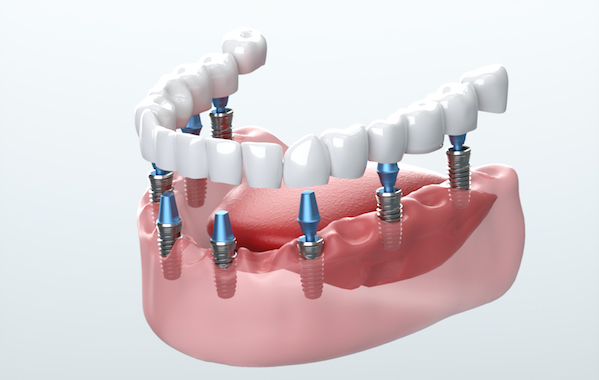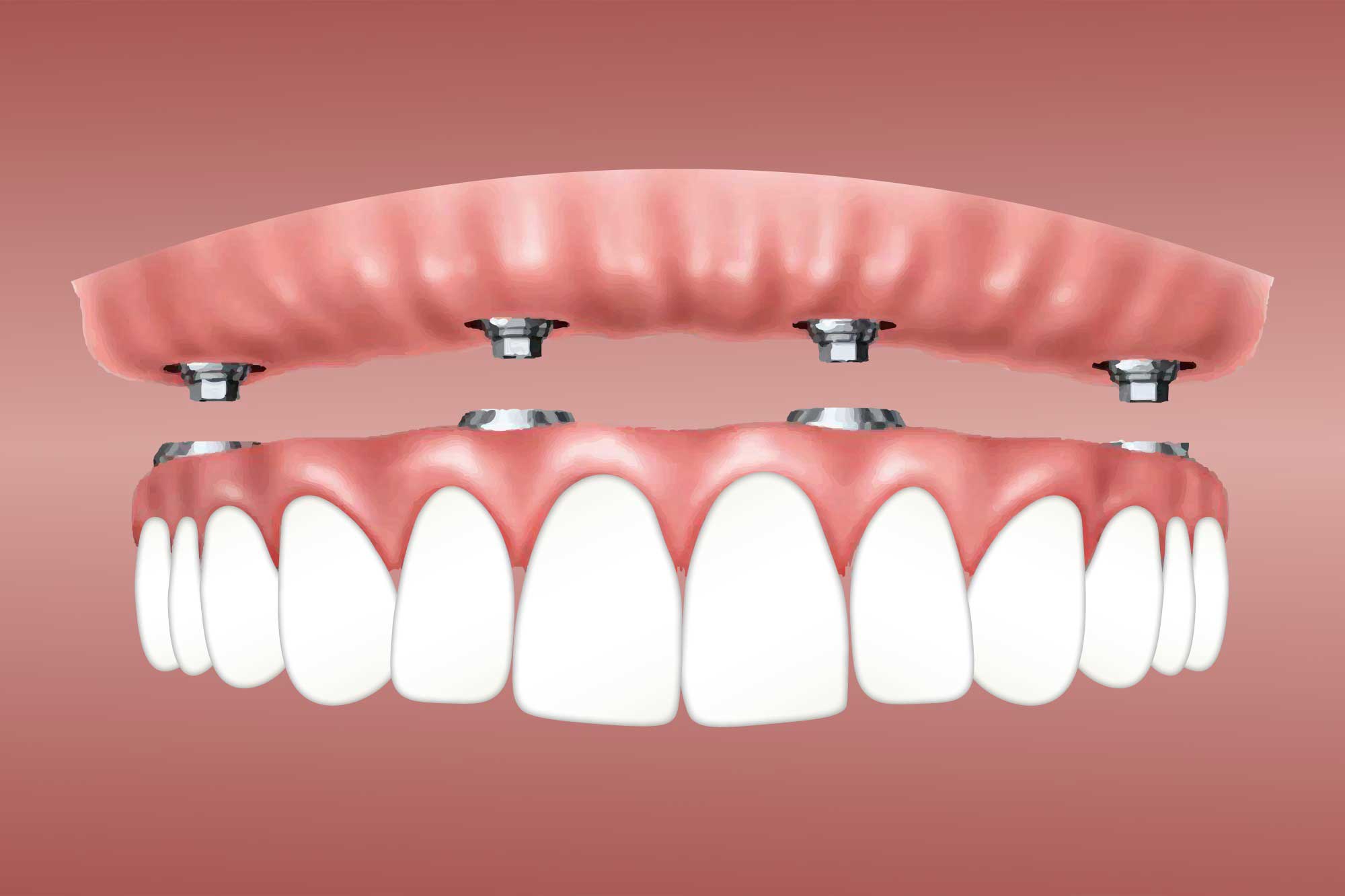Mono Implants Condit OH Dental Implant Types: Choosing the Right Solution
Mono Implants Condit OH Dental Implant Types: Choosing the Right Solution
Blog Article
Mono Implants Hartford OH Dental Implants Cost Breakdown: What You Need to Know
Dental implants for people with gum disease present a novel set of challenges and issues. Gum disease, also recognized as periodontal disease, impacts the supporting buildings of the teeth, including the gums and navigate here the bone. This condition can lead to inflammation and infection, resulting in tissue destruction that compromises the stability site of natural teeth. For people affected by go moderate to severe gum disease, achieving a wholesome basis is paramount before contemplating dental implants.

The initial step for anyone with gum disease is to seek skilled therapy to deal with the underlying condition. This typically includes thorough cleanings known as scaling and root planing, which goal to take away plaque and tartar buildup that harbor micro organism. In some instances, patients might require extra therapies similar to antibiotics or even surgery to restore gum health. Only after the gums have adequately healed and regained stability ought to one think about shifting forward with implant placement.
Orthodontics Sunbury OH What Are Dental Implants? Types, Benefits, and More
Once the gum disease is managed, understanding the extent of the bone loss is crucial. Periodontal disease can lead to the recession of the bone that supports the teeth, making the jaw much less able to accommodate dental implants. A comprehensive analysis, including imaging studies similar to X-rays or 3D scans, is essential in determining how much bone is current and whether or not grafting procedures may be needed.
Bone grafting is a common procedure for these with inadequate bone quantity. During this process, bone material is added to augment the prevailing bone structure. This could be created from varied sources, together with synthetic materials or the patient's own bone harvested from another website. Bone grafting not only creates a strong base for implants but in addition encourages new bone development in the area.
Dental Center New Albany OH Dental Implant Services: Find the Best in Your Area
After the bone grafting procedure, it may be very important give ample time for therapeutic. This healing time can vary relying on the individual’s health and the complexity of the treatment. In some circumstances, it'd take a number of months earlier than proceeding with dental implants. Patience throughout this stage is vital as dashing the process can compromise general results and long-term success.
Once adequate bone has formed, the dental implant process can begin. The implant, a titanium submit, is surgically placed into the jawbone. This submit acts like a root for a replacement tooth, and over time, a process referred to as osseointegration occurs. Osseointegration is essential for the stability of the implant and includes the bone rising around the implant, firmly securing it in place.
Following implant placement, the therapeutic process continues. During this era, the delicate tissues should heal around the implant without infection or issues. Regular follow-ups with a dental professional are essential to monitor healing and tackle any considerations that may arise.
For people with a historical past of gum disease, meticulous oral hygiene is essential each earlier than and after implant placement. Maintaining clean gums and teeth helps prevent re-infection and ensures the long-term success of the implants. This consists of regular dental check-ups, day by day brushing, flossing, and generally utilizing antimicrobial rinses as really helpful by a dentist.
Dental Clinic Columbus OH Step-by-Step Guide to Dental Implant Procedures
Factors like smoking and certain medical conditions can adversely affect the success of implants for those with gum disease. Smoking, for example, can hinder blood circulate and healing, while conditions like diabetes can decelerate recovery and increase the chance for complications. Addressing life-style factors is important to maximise the chance of profitable outcomes.
The journey of obtaining dental implants as a person with gum disease can be complicated, but it typically leads to significant improvements in quality of life. Many individuals report increased self-esteem, enhanced oral performance, and a renewed sense of confidence. Properly positioned implants can restore the flexibility to eat, speak, and smile with out discomfort or insecurity.
In conclusion, dental implants for people with gum disease necessitate a thorough understanding of the additional steps required to make sure success (Dental Implants Pataskala OH). It entails effectively managing gum health, addressing any underlying bone loss, and sustaining impeccable oral hygiene. With the right method, individuals can obtain lasting outcomes and regain perform and aesthetics of their smiles. It is essential to consult with experienced dental professionals who can information patients by way of every step of the process, making certain the very best outcomes
Pediatric Dentist Condit OH Step-by-Step Guide to Dental Implant Procedures

- Dental implants can still be an choice for individuals with gum disease, but thorough analysis and therapy are essential previous to the procedure.
- Addressing gum disease typically entails deep cleansing procedures, similar to scaling and root planing, to scale back irritation and promote gum health.
- A multi-disciplinary strategy is often helpful; collaboration between periodontists and oral surgeons can enhance outcomes for sufferers requiring dental implants.
- Smoking and poor oral hygiene can exacerbate gum disease and compromise implant success; cessation and improved care are important for optimum results.
- Bone density assessment is important, as superior gum disease can result in bone loss, influencing the kind of implant and placement strategies used.
- Implants placed in areas affected by gum disease could require additional support like bone grafting to establish a stable basis for the implant.
- Regular follow-ups could also be essential to monitor gum health after implant placement, guaranteeing that the therapeutic course of is continuing without issues.
- Patients with a historical past of gum disease may have a higher risk of peri-implantitis, making diligent oral hygiene a significant part of long-term care.
- Educating patients about sustaining periodontal health post-implant reduces the possibilities of problems and improves the longevity of the implants.
- Personalized care plans that embrace both restorative and periodontal therapies can enhance the general success rates for implants in gum disease sufferers.undefinedWhat are dental implants, and might folks with gum disease receive them?
Dental implants are synthetic tooth roots placed into the jawbone to help replacement teeth. While people with gum disease can obtain implants, it is crucial to administer and deal with the gum disease first to ensure profitable integration and cut back the risk of implant failure.
Dental Implants Columbus OH Frequently Asked Questions About Dental Implants
How does gum disease affect dental implant success?
Gum disease can compromise the bone and tissue surrounding implants, resulting in greater failure rates. Successful implantation depends on wholesome gums and bone; thus, addressing and treating gum disease is essential earlier than considering implants.
Pediatric Dentist Centerburg OH The Advantages, Risks, and Insurance for Dental Implants
What treatment options are available for gum disease before getting dental implants?
Treatment options might embrace deep cleaning (scaling and root planing), antibiotics, or more advanced procedures like pocket discount surgery. These treatments aim to restore gum health, making implants a viable option.
Dentists Hartford OH Dental Implant Types: Choosing the Right Solution

How long is the recovery course of for dental implants in gum disease patients?
Recovery can range, however usually, the healing period may take a quantity of months. After the preliminary implant placement, the jawbone needs time to fuse with the implant, and any gum disease treatment prior may extend the general timeline.
Are there any risks involved with dental implants in case you have a history of gum disease?
Family Dental Clinic New Albany OH Dental Implant Benefits
Yes, people with a historical past of gum disease face greater risks of implant failure, infection, and complications if the disease just isn't adequately managed earlier than the process. A thorough dental analysis and treatment plan are essential.
What should I discuss with my dentist before getting dental implants with gum disease?
Discuss your medical historical past, current oral health, remedy choices for gum disease, potential risks, and the timeline for both gum disease treatment and implant surgery. Clear communication helps in formulating an efficient treatment plan.
Can life-style modifications improve the possibilities of profitable dental implants for sufferers with gum disease?
Premier Dental Pataskala OH Common Dental Implant Problems and How to Avoid Them
Yes, adopting more healthy habits, corresponding to quitting smoking, enhancing oral hygiene, and sustaining regular dental visits, can considerably enhance the possibilities of profitable dental implants and total gum health.
Is it potential to have crowns placed on implants instantly if I even have gum disease?
Not usually - Dentists Galena OH. Immediate placement of crowns is usually prevented in patients with gum disease, as it could improve the chance of problems. It’s finest to allow for healing and correct gum health earlier than attaching crowns
Dentist Pataskala OH Dental Implant Benefits
How often should I see my dentist after getting dental implants if I previously had gum disease?
Regular follow-ups, sometimes every three to 6 months, are important for maintaining dental implants, particularly for these with a historical past of gum disease. Smile Care Sunbury OH. These visits assist monitor gum health and the integrity of the implants
Report this page